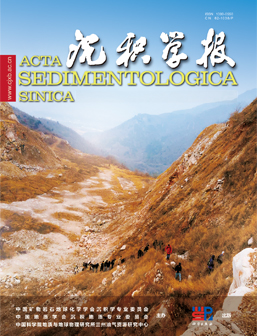Sedimentary environment and its Significance to Paleoclimate in the West Coast of Dalian Lowland
doi: 10.14027/j.issn.1000-0550.2024.051
- Received Date: 2024-01-17
- Available Online: 2024-05-14
-
Key words:
- Geochemical element /
- Sedimentary environment /
- Environmental evolution /
- Indicating significance /
- Dalian city
Abstract: Abstract: [Objective] The high-resolution climate reconstruction of Liaodong Peninsula is important for exploring the evolution of regional climate environment and high-quality development. The aim of this study is to reconstruct the sedimentary environment and climate history by studying the sediments of the west coast of Dalian. [Methods] By analyzing AMS14C dating, lithology, and geochemical elements of the Laoyuwo (LYW) section to reveal the evolution of sedimentary environment and paleoclimate of the region. [Results and Discussions] The sediment is mainly composed of sand, silt, and gravel, which recorded sedimentary environment and paleoclimate evolution information from the Last Glacial Maximum (LGM) to the Middle Holocene (18815–6802 cal.BP). The main chemical components in the profile are SiO2, Al2O3, K2O, and Fe2O3, the total content of which is 90.34%. The contents of major elements from large to small are SiO2 > Al2O3 > K2O > Fe2O3 > Na2O > CaO > TiO2 > MgO > P2O5 > MnO. The sedimentary records shows that the region experienced a dry and cold alluvial (18.8 cal.ka BP – late LGM), slightly warm and humid coastal intertidal (18.8–16.0 cal.ka BP), warm and humid coastal subtidal (18.8–16.0 aal.ka bp), warm and humid coastal subtidal((16.0–11.7 cal.ka BP), warmest and wettest coastal salt marsh (11.7–6.8 cal.ka BP), and dry and cold fluvial environment (6.8–0 cal.ka BP). The highest sea level around 6.8 cal.ka BP and the rapid climatic events during Younger Dryas (DY) and 8.0–9.0 ka are also responses in the sediment. [Conclusions] This study provides basic data and information for the Holocene climate reconstruction of Liaodong Peninsula, particularly for the sedimentary environment evolution history of the west coast of Dalian.
| Citation: | Sedimentary environment and its Significance to Paleoclimate in the West Coast of Dalian Lowland[J]. Acta Sedimentologica Sinica. doi: 10.14027/j.issn.1000-0550.2024.051 |






 DownLoad:
DownLoad: